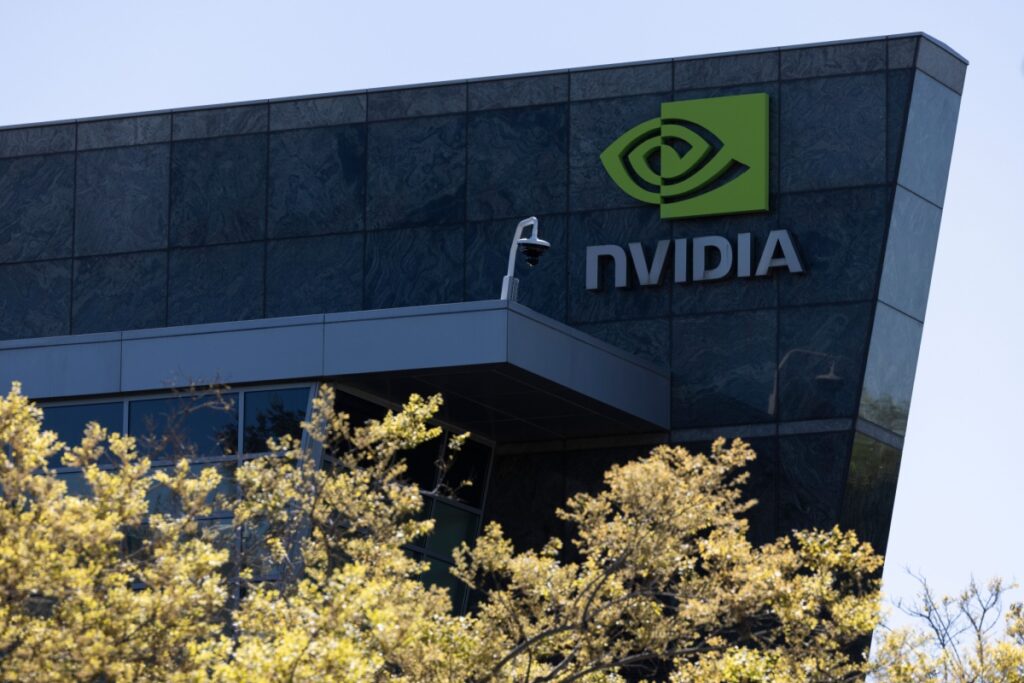Nvidia has become the first publicly traded company to top a $5 trillion market capitalization, reaching the benchmark just three months after first crossing $4 trillion. The new record reinforces how the generative-AI boom has reshaped equity markets and crowned Nvidia as the core supplier of infrastructure for training and running advanced models. Shares touched $207.86 in early U.S. trading with about 24.3 billion shares outstanding, putting the company’s value at roughly $5.05 trillion. Nvidia’s valuation now exceeds the GDP of India, Japan and the United Kingdom, according to IMF figures referenced in coverage of the milestone.
Demand, Products, And Latest Announcements
The company’s ascent has been propelled by exceptional appetite for its data-center GPUs, which evolved from graphics chips into the standard engines for large-scale AI. Flagship lines such as H100 and Blackwell underpin many of today’s large-language models and inference systems, cementing Nvidia’s position at the center of AI infrastructure spending. On Tuesday, CEO Jensen Huang highlighted about $500 billion in AI-chip orders and said Nvidia will build seven AI supercomputers for the U.S. government, adding to visibility around future demand. On the milestone day, Nvidia’s stock rose around 4 to 5%, reflecting optimism after these announcements.
Investors have also treated Nvidia’s rapid scale-up as a bellwether for the broader U.S. market, where AI-related capital expenditures have lifted major indexes to repeated highs. The company’s pace of value creation since the launch of mainstream generative-AI tools in 2022 has few precedents, and it is set to provide another checkpoint when it reports quarterly results on November 19.
Peers, Precedents, And Valuation Debate
Nvidia’s rapid climb evokes earlier technology shifts. Apple rode the iPhone era to become the first listed firm to reach $1 trillion, $2 trillion, and $3 trillion; this year both Apple and Microsoft have also crossed $4 trillion in market value, underscoring the concentration of megacap strength in U.S. markets. At the same time, prominent authorities, including the Bank of England and the IMF, have recently warned about the risk of an AI-driven valuation bubble, urging investors to separate durable cash-flow growth from capacity announcements. The discussion has intensified as Nvidia’s market cap has expanded by the trillions within a relatively short span.
Even supporters acknowledge the bar is high. Analysts note that sustaining this valuation requires continued execution across new product cycles, supply-chain coordination with leading foundries, and the conversion of large AI budgets into recurring software and systems revenue. Skeptics point to the possibility that investor expectations could outpace realized returns, especially if competitors narrow performance gaps or if enterprise AI deployments take longer to translate into profits. Those cross-currents have kept the valuation debate front and center despite the company’s unprecedented scale.
Geopolitics, Trade Policy, And The Road Ahead
Nvidia’s prominence also places it at the intersection of US-China technology policy. President Donald Trump is expected to discuss Nvidia’s Blackwell chips with Chinese President Xi Jinping on the sidelines of this week’s APEC meetings in South Korea, where chip export rules and market access remain sensitive topics for both governments. Jensen Huang is traveling in the region as leaders convene, underscoring how corporate strategy and trade diplomacy increasingly overlap in the AI supply chain. In recent months, Nvidia has indicated it is engaging with U.S. officials on compliant product variants and has emphasized the need to balance national-security considerations with participation in global developer ecosystems.
For markets, Nvidia’s new threshold highlights two parallel realities: extraordinary, measurable demand for AI compute, and persistent uncertainty about how policy shifts, competitive dynamics, and the cost of capital will shape the upgrade cycle. With Nvidia now the reference point for AI infrastructure, investors will be watching near-term delivery on orders, the cadence of Blackwell deployments, and any signals from upcoming results about margins, supply, and customer concentration.



